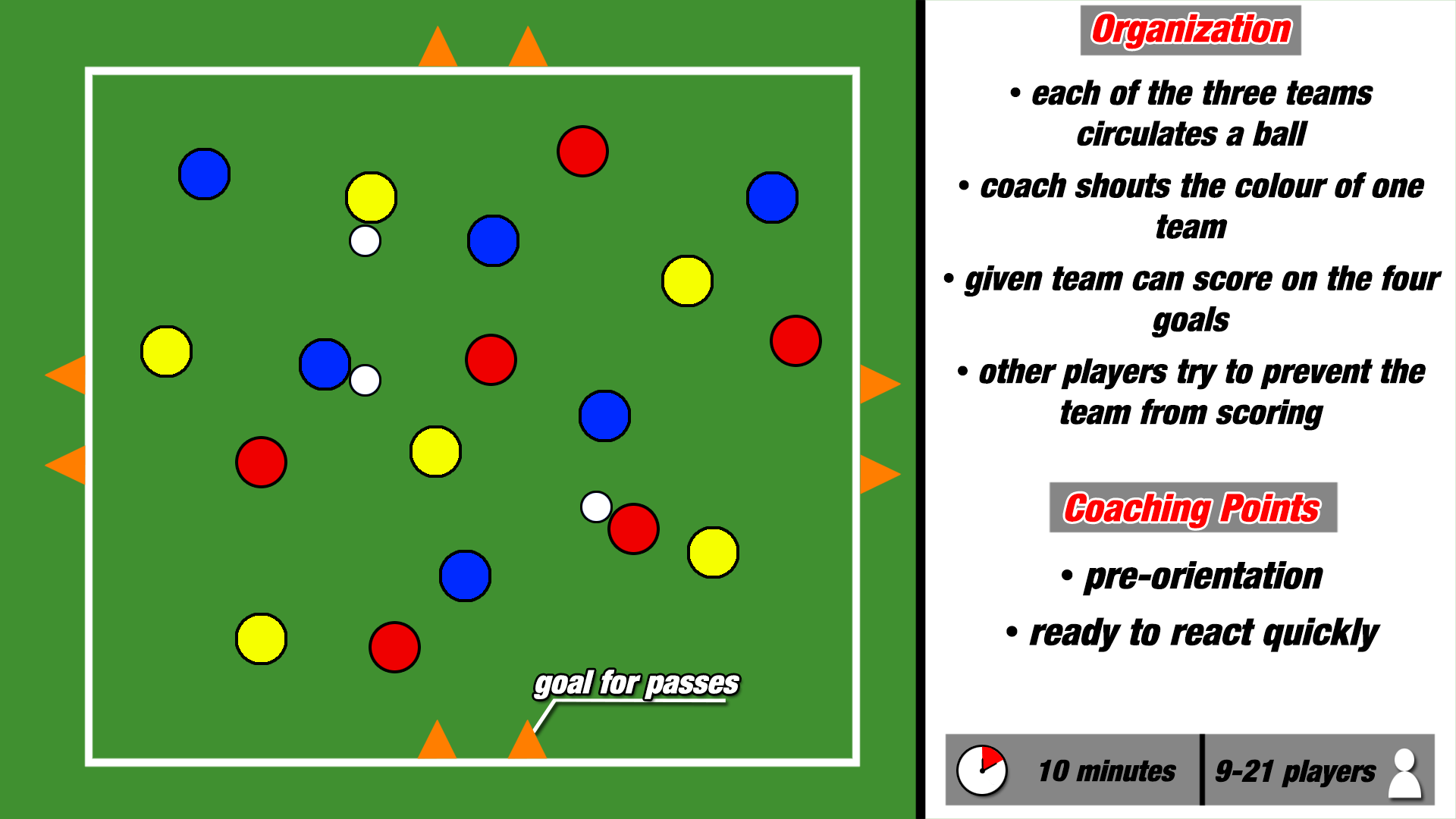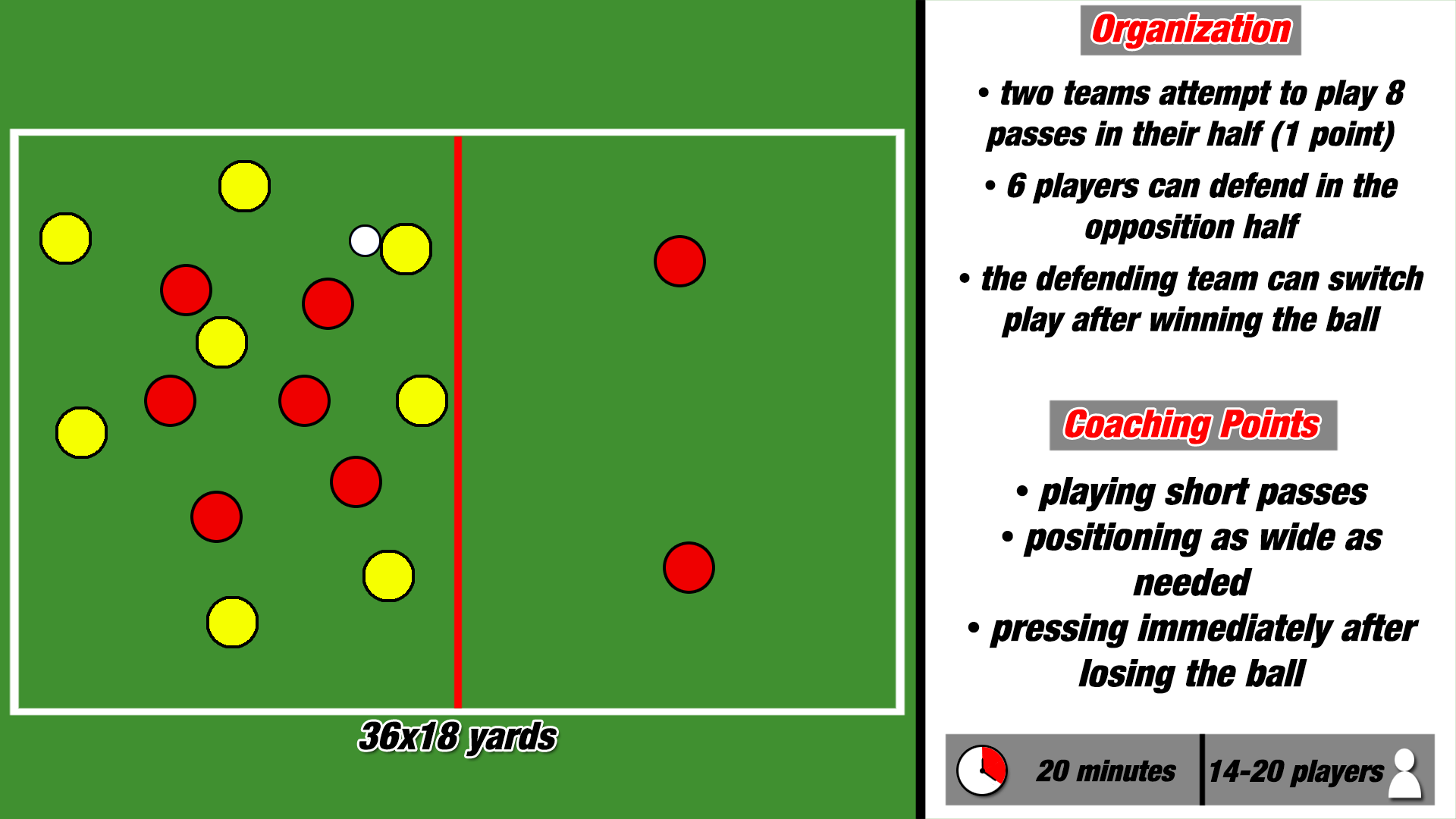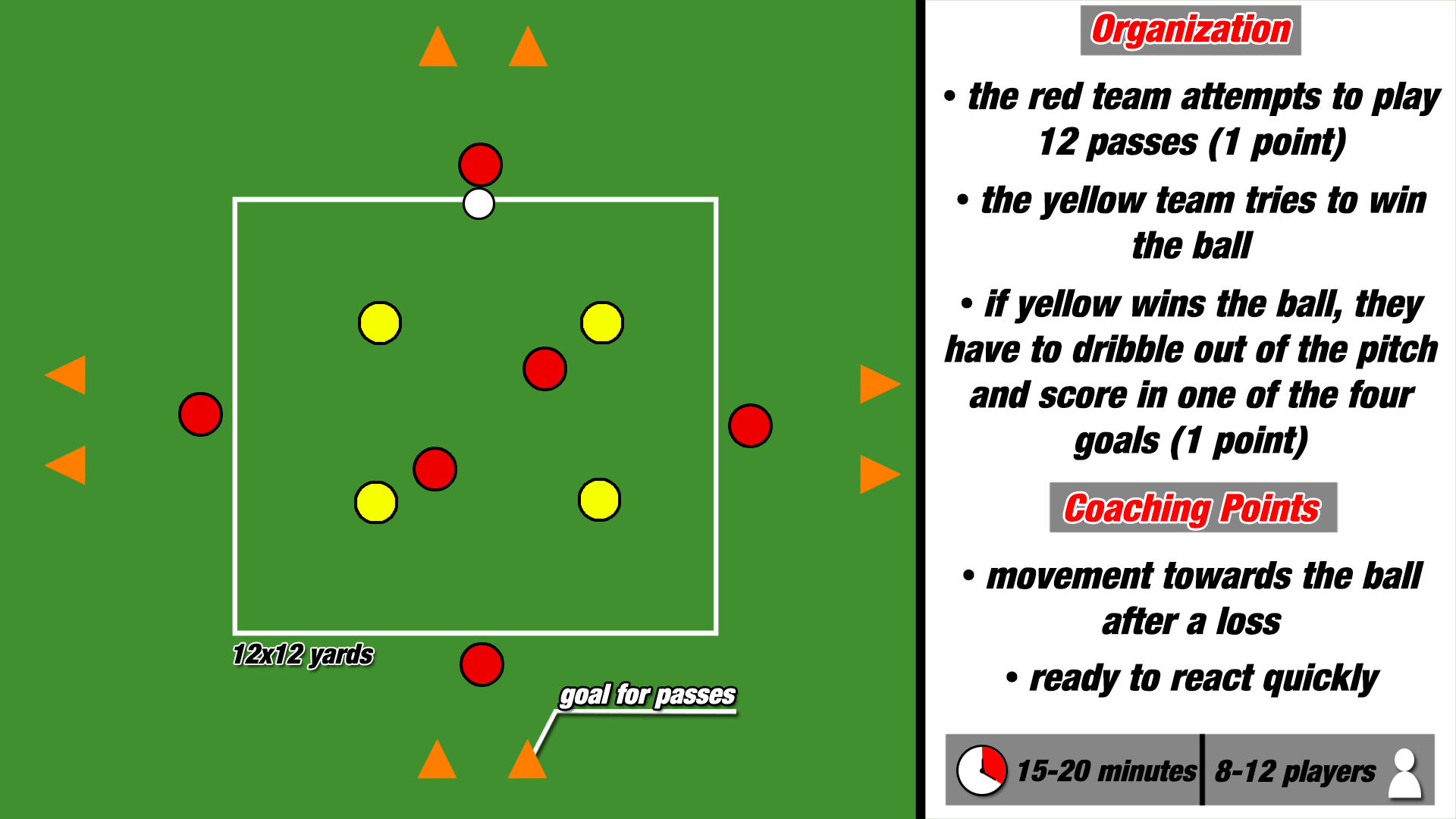Football has become a lot more dynamic throughout the last decades. As a result, the transition phases have become more and more important. This rang the bell for a new concept on how to react after losing the ball: Gegenpressing. It is the concept of regaining possession immediately after the loss of the ball by pressing the opposition. Jürgen Klopp who already deployed this concept at Dortmund is now using it at Liverpool. With this approach, Liverpool enchants supporters as well as tacticians.
“No playmaker in the world can be as good as a good counter pressing situation.” (Jürgen Klopp)
Nowadays, Klopp is just one example for coaches who make use of counter-pressing. Several world-class teams such as Barcelona, Bayern and Manchester City (all under Guardiola) and the sides of Sarri deploy the method with success.
Preconditions for a good Gegenpressing
In top-level football, teams need approximately six seconds to organise after winning the ball. Counter-pressing is the concept to use this timeframe of disorganisation of the opposition to quickly regain possession. As six seconds is not a huge amount of time, Gegenpressing affords quick and intense runs. That is why this approach requires players with good endurance and a lot of pace.
Furthermore, taking a look at the teams that use counter-pressing, it is clear that all sides like to be in possession. Confidence to possess the ball and to play a constructive style of football is the foundation of counter-pressing.
Principles of Gegenpressing
As in the last article (How to Practice a High Press), we are going to create principles for the players to follow. Therefore we establish instructions out of the most important aspects that influence our counter-pressing.
To begin with, a basic rule of defending is to minimize space and thereby maximize pressure. That is why one should make sure that players bravely move towards the ball when transitioning from attack to defence.
#1 We protect our goal by moving towards the ball to keep it as far away from our goal as possible.
As one needs a compact shape to decrease space to a minimum, short distances between players are necessary. A Gegenpressing situation should always be prepared during the possession phase. To provoke situations where the players do not need much time to get into a compact shape, it is useful to keep the passes short. The space where the ball is, is always the tightest area of the pitch. These assumptions lead to our second principle:
#2 Play rather short passes than long balls to keep the distance to the ball short.
Since in football the time between possession and being dispossessed can be really short, it is necessary to prepare for a possible loss of the ball during the possession phase. Especially defenders should ensure a good rest defence. Clarifying responsibilities can save a crucial amount of time whenever the team loses the ball. As the opponent plays with one striker, for example, one centre-back can mark him, the other one can cover and the holding midfielder could move forward into midfield to press the ball.
#3 Look for possible threats in case of a loss of the ball when we are in possession.
Last but not least the positioning of the players is important as well. To keep possession, one needs to create width and depth. Whereas your players should always provide as much depth as possible, the creation of only as much width as needed can be helpful to stay close to the ball. In case of a loss, one can press in an even smaller amount of time. That means the players should position themselves slightly wider than the opponent to still stretch the opposition apart.
#4 Provide only as much width as needed to retain possession.
Drills to practice Gegenpressing
The following part includes three different small sided games enabling to coach a counter-pressing philosophy by teaching your players the foregoing mentioned principles.
Since quick thinking is vital for counter-pressing, one can use any drill which demands quick thinking and reacting from the players as a warm-up for a Gegenpressing session.

A Gegenpressing related warm-up game would be to select three equal teams which play passes within their group. Whenever the coach shouts a colour of one of the teams, the given team can score on four passing goals around the pitch. All other players have to prevent the possession team from scoring.
A possible variation is to use two different balls that are circulated within all players. Whenever the coach shouts the colour of one ball, the team possessing this particular ball can score while the other two teams must defend the goals. Alternatively, the coach can show colours with cones or bibs instead of shouting them loud. This demands orientation of the players to keep an eye on the coach and the balls at once.

To continue, one can practice Gegenpressing in a drill which creates overload possession play versus a defending team with a numerical disadvantage. The pitch is divided into two halves. Each team has their own half where they try to retain possession and play a specific number of passes for one point. The other team defends with a lower number of players. After the defensive side regained possession, they can quickly switch play to their side. To prevent this, the other team needs to make use of Gegenpressing. That is why the drill is useful to explain the foregoing mentioned principles and apply a Gegenpressing culture in your team!

Another drill that can be accomplished in a session focusing on the counter-pressing, is a simple 5v3/6v4/7v5 with transition actions. One team with a numerical advantage attempts to play a certain number of passes. The defending team can score a goal after winning the ball and dribbling out of the pitch. This is the moment where the possession team can counter-press the opposition. In this drill, players learn to quickly react and move towards the ball after losing it.
In every drill, the rules (pitch size, number of players, number of passes, touch limit) can be adjusted to the level of the players.
Conclusion
To sum up, there are endless different practices to teach counter-pressing. However, it is most effective to keep the drills simple and challenge the players with adjustments to the rules.
Besides the tactical aspects, Gegenpressing needs confident players. Therefore one should practice counter-pressing regularly in sessions. If you do so, you will quickly notice progress in the speed of execution of your players. This way, one can take control of the transition phases and increase the possession rates.





Comments